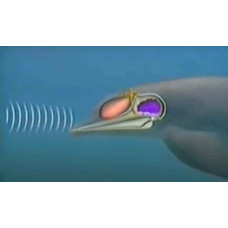Biolocation (from Greek βίος - life and Latin locatio - position) is the ability of animals to determine the position of arbitrary objects in the environment (direction, distance), to receive information about these objects (size, shape), or to receive information about their own orientation in the environment (biorientation).
Fish biolocation is the ability of fish to locate their position or the position of another organism in space. Biolocation is based on the reception of external mechanical (tactile), acoustic or electrical stimuli. A distinction is made between passive biolocation, in which the source of the stimuli is the environment (e.g. mechanical vibrations perceived by the lateral line of some fish or electric fields perceived by the ampulla of Lorenzini rays), and active biolocation, in which the source of the probe signal is the animal itself (echolocation of dolphins and bats, active electro-location of some fish species).
Fish biolocation
Tags: Fish biolocation

